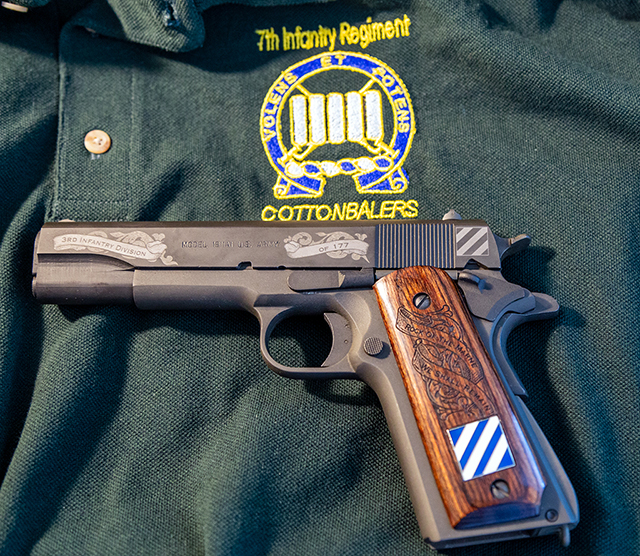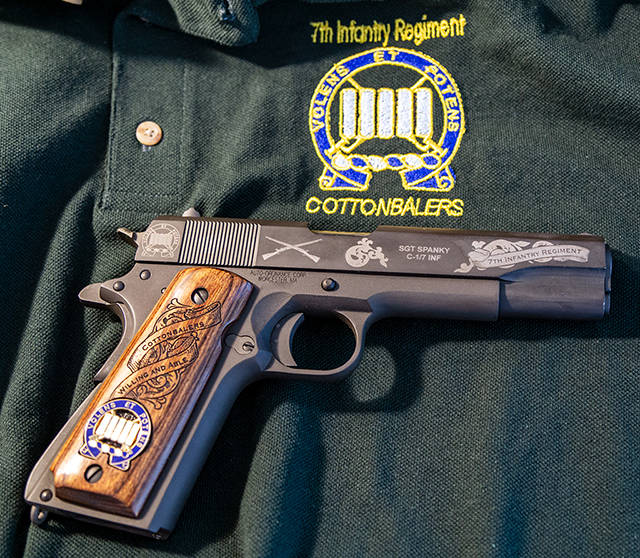What's Happening
Cottonbaler Pistol
There has been a request for another order of the Cottonbaler 1911A1 pistols that Leonard Collins arranged for back in 2009.
I have been in contact with Leonard and he is planning on another order of pistols. At this time, there is not a price. He has to price out the pistol and then the engraving.
Here are 2 photos of my Cottonbaler Pistol and the flyer he had at the 2009 Reunion.



If interested, please contact Leonard directly. Here his contact information:
Leonard Collins
PO Box 224
Sylvania, GA 30467
803-300-2554
Volens et Potens
Boswell Scholarship Update
Due to the current COVID-19 restrictions, the application deadline for the Boswell Scholarship has been extended to 3 Jul 2020.
Scholarship Form →